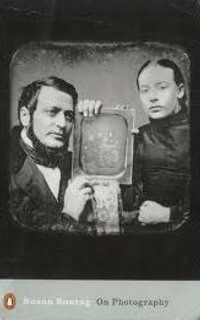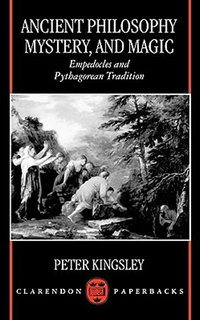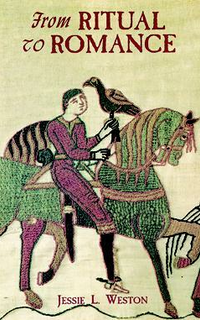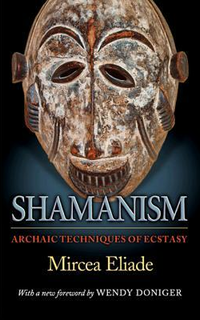Collection
12 Books That Changed How I Hear Music
But none of them are music books
As a young man, I wrote a peer-reviewed article that attacked music critics from the 1930s who claimed jazz musicians get into a trance when improvising. I thought that was a simple-minded and reductionist attitude. But I was forced to change my opinion by the Hungarian-American psychologist Mihaly Csikszentmihalyi (1934-2021), whose pioneering research into the mental underpinnings of peak performance resulted in a number of influential books, most notably Flow (1990). After studying his work, I not only renounced my previous opinion, but started looking more closely into the role of altered mind states in the history and practice of music. I now believe that the jazz mindset is a real thing, and very powerful—with all sorts of implications we have only just begun to grasp.
Many will be shocked by the inclusion of this book on my list. After all, what can a music writer learn from a celebrity chef and TV show host? And it’s true, I don’t pay much attention to cable television pundits. But Anthony Bourdain had a profound impact on how I pursue my vocation—standing out as an inspiring role model when I reinvented myself as an honest broker in my craft. I could write an entire essay on things I learned from Mr. Bourdain, but what most impressed me was: (1) He was absolutely real, unguarded, and compassionate, thus earning his audience’s trust; (2) He followed his instincts even when they ran counter to what everyone else in his field was doing; (3) He never lost sight of the fact that his special subject (food) is intimately connected with the whole human being and our larger social fabric; and (4) He brought people together and celebrated their common humanity, even in the most difficult and divisive settings. I don’t kid myself; I know I can’t be another Anthony Bourdain—he had gifts I don’t possess. But I still learned from him, adapting his approach as best I can to the possibilities of my personal mission and skill set.
There is no mention of music anywhere in this 1972 work, which offers a new theory of human behavior based primarily on an analysis of ancient Greek tragedy mixed with audacious sociological speculations. Here again, I was initially reluctant to accept the ideas in this book. To be bluntly honest, when I first read it back in my college days I gave up after a couple chapters—complaining that the author never provided clinical studies or empirical tests for his theories. I now deeply regret that I didn’t take a course from Girard. He was teaching at that same college, and I saw him in the flesh regularly, although I never spoke with him. It was only later that I returned to Girard with humility and respect, after I saw how perfectly his concepts explain otherwise confusing aspects of contemporary society.
I now believe that we are living in a Girardian world, whether we like it or not, and his key ideas—mimetic desire, reciprocal violence, sacrificial rituals that defuse hostilities, an obsession with scapegoats who are both celebrated and attacked, etc.—are driving forces at every turn. I now look at concerts, music festivals, band breakups, musician Instagram posts, viral YouTube videos, etc. differently because of Girard. He helps me understand everything from the cannons in the 1812 Overture to to why rock stars trash their hotel rooms (and, even more, why fans expect it). Girard never mentions rock music once anywhere in his books, but is the theorist par excellence of the rock experience—and much else besides.

It’s hard for people to imagine, in this post-poptimist age, how wide the gap between highbrow and lowbrow culture once was. As a result, I struggled for many years to find the right way of writing about jazz. Jazz writing had been invented by journalists delivering short articles on deadline, mostly summaries of concerts and recordings. As a young man, I learned how to write those kinds of articles myself, but I felt instinctively that I needed to aim higher—but where could I find the proper language and attitude to do this? That was almost the same moment when Susan Sontag published On Photography. I had just turned twenty, and I felt that Sontag’s book was exactly the role model I needed at the time. Sontag was a leading literary critic and public intellectual, and you expected her to write about Shakespeare or Dante, not Kodak snapshots and picture postcards. Just seeing this example of smart, iconoclastic criticism applied to everyday and populist idioms gave me confidence and a sense that jazz writing could be a much bolder endeavor than I had previously believed.

In the field of scholarship on ancient philosophy, you can’t be more of a renegade than Peter Kingsley. He started out as a sober academic, and this early book, published by Oxford University Press, only gives a hint of the subversive work he would pursue in later years. Kingsley turned into a genuine mystic and guru—and all based on what he had discovered in the ancient writings of Parmenides, Empedocles, and the earliest Greek philosophers. What no one will tell you is that these pre-Socratic philosophers were actually singers, and their works were intended as songs. Even more important, these were empowered songs with the potential to change lives—the bottom line, as amazing as it sounds, is that music made philosophy possible. A handful of other classicists had come close to grasping this (E.R. Dodds, F.M. Cornford right before he died, Vittorio Macchioro), but Kingsley put all the pieces together here and in his subsequent books. He explained the most important truths about the origins of Western music, but they aren’t recognized because (once again) he didn’t write music books.

This book is remembered for a curious reason—namely because T.S. Eliot gave it credit for inspiring much of his famous poem “The Waste Land.” But From Ritual to Romance is much more than a source for modernist poetry. Weston will not only tell you how the bardic tradition of song as a repository for wisdom influenced literary culture, but shows how it actually survived into the modern age—albeit in hidden ways. The most intriguing passages here are the footnotes where Weston claims that she has firsthand experiences of secret societies—maybe she’s even a member—that preserved this aural tradition, although she is forbidden to share the details. Now, that is the kind of musical education you’re not going to get at Juilliard. I’ve devoted a huge amount of energy into penetrating into this knowledge base, and Weston is one of my most trustworthy guides—although what she leaves unsaid is perhaps the most important part of the book.

The subtitle of this book describes it as a “Theory of Afro-American Literary Criticism,” but this is an essential work for anyone who wants to understand song lyrics. Gates uncovers the coded meanings in vernacular texts, and I’ve usefully applied his conceptual framework to everything from the lyrics of Sappho to the blues songs of Robert Johnson. Because songs have frequently addressed controversial issues long before the broader culture accepts them, you often have to crack the code to understand what’s actually happening in the music. That’s especially true of songs of the African diaspora, but the framework provided here has much broader applicability.
Music is a gift, and in more ways than one. But it took me decades to understand what that actually means. I studied the anthropology of gift exchange back in grad school, a few years before Lewis Hyde’s book was published. But I really didn’t grasp its full significance back then. (As you have seen, this is a recurring theme of this article, namely the ways my preconceptions made it harder for me to understand what these books had to offer.) Back then, the best source of information on gifting as a social practice was an antiquated study by Marcel Mauss from 1925, which made these exchanges seem like a bizarre departure from accepted norms, and possibly even destructive (as in the potlatch ritual of the Pacific Northwest). But Hyde, who published his book in 1983, helped me understand that gift exchanges were much more important than economists and cultural historians lead us to believe. In particular, I gradually came to grasp that talented musicians often struggle because, as gifted peopled, they tend to view their songs in this light. They are punished for building their vocation on gift exchanges in a society that wants to treat everything on a transaction basis. I’d even claim that the biggest problem with the music ecosystem today is the dominance of platforms (YouTube, TikTok, etc.) that pretend to be gift exchanges, but really aren’t. Hyde provides invaluable tools for understanding and addressing this tragic mismatch.
This is a book that infuriates some scholars—at least among that small group who have the patience to work their way through its dense text. But Graves demonstrates, on page after page, both his erudition and the bold ambitions of his project. Strange to say, he is very much the European counterpart of Henry Louis Gates. Graves believes he has deciphered codes at the root of Western culture, and argues persuasively that they were created by the bards, those wise musicians who linger in the background of European history. I don’t agree with everything he says here, but this is a vitally important book that explains things about the connection between music and culture you won’t learn anywhere else. But—like every other book on this list—no one describes The White Goddess as a music book, and it will never get assigned in a music class.
I burnt out on literary criticism during the late stages of my formal education. I was so frustrated with the pretentiousness and jargon that I actually stopped reading all criticism for many years—perhaps a dangerous move for a practicing critic. But Camille Paglia showed me that late-stage criticism could still be provocative, funny, engaged, and brutally honest. Here, too, I don’t agree with everything in this book, but that’s part of Paglia’s appeal. In a world of narrowing, self-referential discourses, she still has the capacity to ruffle feathers, and maybe even jab a blade into the delicate flesh beneath. I wish there were a hundred other academic practitioners of criticism who shared her audacity.
I read Eliade’s Shamanism during the early stages of research for my book Healing Songs (2006). It’s a long, dense work, and I was expecting a slow slog through academic minutiae and endless footnotes. But, here again, I was shaken up by what I read—and in the aftermath I read stacks of other books about shamanistic practices, from various cultures and time frames. Eliade taught me that shamans provided an ideal type of empowered music-making at the center of every culture where they flourished. And they operated everywhere—Asia, Australia, Africa, the Americas, even Western Europe—relying on almost identical musical practices in every instance.
I eventually came to recognize that much of what I had previously understood about other empowered musicians (bards, griots, troubadours, even rock stars) only made sense when grasped within the context of this broader shamanistic tradition that dates back thousands of years—or, probably, even tens of thousands of years. This involved a huge course of study for me, spanning over the course of many years, with important implications for everything from how I viewed rhythm to my inquiry into the universal touchstones for human music.

When I stumbled upon this book, I couldn’t believe what it revealed. I had been engaged in an in-depth study of the troubadours, those inventors of the modern Western love song—indeed, they legitimized singing about personal emotions at a time when that was virtually forbidden throughout Europe. I had consulted all the leading scholars who wrote about troubadour music, yet none of them had a clue about these female slave singers from the early Abbasid era in Baghdad, who anticipated almost every ingredient in the troubadour worldview. Academics were still struggling to comprehend the relevance of the kharja of the muwashshah (an Iberian antecedent of the troubadour lyric that nobody had noticed until 1948), but were ignorant of the qiyan back in Iraq, who provide the solution to the most urgent mysteries of multicultural European music of the last thousand years. Even today we sing about being a slave to love, and it’s because the language of the love song was invented by actual slaves.
I later was able to track the dissemination of this music, which traveled from Baghdad through North Africa and into the Iberian peninsula, where the troubadours absorbed it and brought it back to the South of France. And from there it entered the broader streams of Western music. This is a decisive moment in music history, but has been completely ignored for too long. Spurred on by Caswell, my research provided a breakthrough for my book on the history of the love song, but it also laid the foundation for my later inquiries into how enslaved, poor, and marginalized communities have often been the source for musical innovations—a key theme in my book Music: A Subversive History.
It’s no exaggeration to say that female slave singers of the ninth and tenth centuries helped me unlock the inner workings of how musical innovations appear and are disseminated. But once again, the turning point was reading an obscure book that no one considered relevant to music—and, for that very reason, opened doors for me that would have, otherwise, remained locked.






